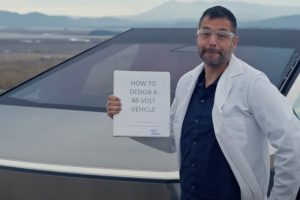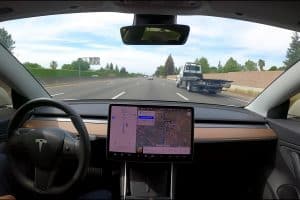- 🗞️ Tesla’s US marketing team, including the “growth content” team of about 40 workers, has reportedly been affected by the company’s recent round of layoffs.
- 👨🎨 Some members of Tesla’s Design Studio in Hawthorne, CA were also reportedly impacted by the job cuts.
- 🗣️ Elon Musk acknowledged that Tesla’s advertisements have been too generic, stating, “The ads were far too generic — could’ve been any car.”
- 😮 The decision to let go of the US marketing team may come as a surprise since Musk had previously approved the idea of advertising during last year’s annual shareholder meeting.
- 📉 Tesla’s recent round of job cuts is reportedly the largest by volume to date, with the company expected to let go of over 14,000 workers globally.
- ⚔️ Elon Musk hinted that he is entering “wartime CEO” mode once more, possibly to prepare for Tesla’s ambitious goal of unveiling a dedicated Robotaxi on August 8, 2024.
In a move that has sent shockwaves through the automotive industry, Tesla has reportedly let go of a significant portion of its US marketing team, including the “growth content” team comprising approximately 40 workers. This decision coincides with Elon Musk’s candid admission that Tesla’s advertisements have been “far too generic” and could have been promoting any car brand.
The Advertising Conundrum
Tesla’s approach to advertising has been unconventional, to say the least. Unlike traditional automakers that allocate substantial budgets for mainstream marketing campaigns, Tesla has relied primarily on word-of-mouth, social media buzz, and Elon Musk’s own charismatic persona to drive interest in its products. However, as the company continues to expand its global footprint and faces increasing competition in the electric vehicle (EV) market, the need for a more strategic and targeted advertising strategy has become increasingly apparent.
Musk’s critique of Tesla’s previous advertising efforts as being too generic is a wake-up call for the company to reevaluate its marketing tactics. The decision to let go of the US marketing team, while undoubtedly difficult, may be a necessary step in revamping Tesla’s advertising approach to better align with its vision and unique selling propositions.
The Road to the Robotaxi Revolution
One of the most intriguing aspects of this advertising shakeup is Elon Musk’s subtle hint that Tesla is entering “wartime CEO” mode once again. This phrase, which has become synonymous with Musk’s intense focus and determination during critical periods, suggests that Tesla is gearing up for a major initiative – the unveiling of a dedicated Robotaxi on August 8, 2024.
The Robotaxi concept has been a long-standing ambition for Tesla, as the company aims to revolutionize the transportation industry by offering an autonomous ride-hailing service. This ambitious project not only requires technological breakthroughs but also a carefully crafted marketing strategy to educate consumers, allay concerns, and build trust in this groundbreaking mobility solution.
Tailoring the Message
As Tesla prepares for the Robotaxi revolution, its advertising efforts will need to be laser-focused and tailored to the unique value proposition of this innovative service. Gone are the days of generic car advertisements; Tesla must now craft compelling narratives that highlight the convenience, safety, and sustainability of autonomous ride-hailing.
This transition presents an opportunity for Tesla to redefine the way consumers perceive transportation and showcase the company’s cutting-edge technology and forward-thinking vision. By leveraging its brand cachet and Elon Musk’s visionary leadership, Tesla can position itself as a trailblazer in the mobility landscape, capturing the imagination of consumers seeking a seamless, on-demand transportation experience.
A Lean, Mean Marketing Machine
While the layoffs within Tesla’s marketing team may have been driven by cost-cutting measures, they also present an opportunity for the company to build a leaner, more agile marketing force. By streamlining its operations and focusing on strategic initiatives, Tesla can allocate resources more effectively and cultivate a team of marketing professionals who are intimately familiar with the company’s unique selling points and the Robotaxi vision.
This lean approach aligns with Musk’s “wartime CEO” mindset, where every resource is optimized and every team member is aligned with the company’s critical objectives. By fostering a culture of innovation and adaptability within its marketing team, Tesla can stay ahead of the curve and respond swiftly to market dynamics, consumer trends, and competitive landscapes.
The Road Ahead
As Tesla navigates this transitional period, the automotive world will be watching with bated breath. The company’s ability to craft a compelling advertising strategy that resonates with consumers and effectively communicates the value proposition of its Robotaxi service will be a defining factor in its success.
While the road ahead may be challenging, Tesla’s willingness to disrupt the status quo and embrace unconventional approaches has been a hallmark of its journey thus far. With Elon Musk at the helm, Tesla’s advertising shakeup could very well be the catalyst for a marketing revolution that propels the company into a new era of transportation innovation.





